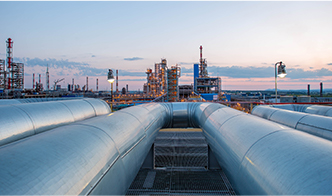-
Cangzhou Yulong Steel Co., Ltd.
-
Phone:
+86 13303177267 -
Email:
admin@ylsteelfittings.com
- English
- Arabic
- Italian
- Spanish
- Portuguese
- German
- kazakh
- Persian
- Greek
- French
- Russian
- Polish
- Thai
- Indonesian
- Vietnamese
- Zulu
- Korean
- Uzbek
- Hindi
- Serbian
- Malay
- Ukrainian
- Gujarati
- Haitian Creole
- hausa
- hawaiian
- Hebrew
- Miao
- Hungarian
- Icelandic
- igbo
- irish
- Japanese
- Javanese
- Kannada
- Khmer
- Rwandese
- Afrikaans
- Albanian
- Amharic
- Armenian
- Azerbaijani
- Basque
- Belarusian
- Bengali
- Bosnian
- Bulgarian
- Catalan
- Cebuano
- China
- China (Taiwan)
- Corsican
- Croatian
- Czech
- Danish
- Esperanto
- Estonian
- Finnish
- Frisian
- Galician
- Georgian
- Kurdish
- Kyrgyz
- Lao
- Latin
- Latvian
- Lithuanian
- Luxembourgish
- Macedonian
- Malgashi
- Malayalam
- Maltese
- Maori
- Marathi
- Mongolian
- Myanmar
- Nepali
- Norwegian
- Norwegian
- Occitan
- Pashto
- Dutch
- Punjabi
- Romanian
- Samoan
- Scottish Gaelic
- Sesotho
- Shona
- Sindhi
- Sinhala
- Slovak
- Slovenian
- Somali
- Sundanese
- Swahili
- Swedish
- Tagalog
- Tajik
- Tamil
- Tatar
- Telugu
- Turkish
- Turkmen
- Urdu
- Uighur
- Welsh
- Bantu
- Yiddish
- Yoruba

Jan . 01, 2025 06:29 Back to list
Techniques for Welding Circular Pipes Efficiently and Effectively
Welding Round Pipe Techniques, Applications, and Considerations
Welding, a critical process in metal fabrication, encompasses a variety of techniques to join metal parts, and one of its significant applications is in welding round pipes. Round pipes are commonly utilized in industries ranging from construction to automotive due to their structural integrity and versatility. This article delves into the various methods for welding round pipes, their applications, and considerations for achieving optimal results.
Overview of Welding Round Pipes
Round pipes, often made from materials like steel, stainless steel, or aluminum, are essential in many structural and engineering applications. The process of welding these pipes not only requires a solid understanding of the materials involved but also the specific welding techniques that best suit the geometry of the pipes.
Common Welding Techniques for Round Pipes
1. TIG Welding (Tungsten Inert Gas Welding) TIG welding, known for its precision, is ideal for thin-walled round pipes. This method uses a non-consumable tungsten electrode and an inert gas (usually argon) to shield the weld from contamination. TIG welding provides excellent control and produces high-quality, clean welds, making it perfect for applications where aesthetics and strength are crucial.
2. MIG Welding (Metal Inert Gas Welding) MIG welding is suitable for thicker round pipes and is characterized by its speed and efficiency. This method uses a continuous feed of metal wire and an inert gas to protect the weld pool from contamination. MIG welding is often preferred in industrial applications due to its ease of use and adaptability for various configurations and material types.
3. Stick Welding (Shielded Metal Arc Welding) Stick welding is a versatile method that can be used in outdoor environments. It utilizes a consumable electrode coated in flux, which helps protect the weld from impurities. While stick welding may not be as neat as TIG or MIG, it is cost-effective and effective for heavy-duty applications.
welding round pipe

4. Submerged Arc Welding (SAW) Submerged arc welding is utilized for larger round pipes, especially in industrial settings. This method uses a continuously fed filler metal and is submerged under a blanket of granular flux. This technique allows for deep penetration and is particularly effective in creating thick joints in heavy-walled pipes.
Applications of Welded Round Pipes
Welded round pipes find applications across various domains. In construction, they serve as structural components, including columns and beams, due to their strength and ability to bear loads. In fluid transport, welded stainless steel pipes are often used in the chemical and food industries to deliver fluids safely and hygienically. The automotive industry relies on welded round pipes for exhaust systems and structural frames, capitalizing on their lightweight and high-strength properties. Additionally, energy sectors utilize round pipes in pipelines for transporting oil and gas, where durability and resistance to high pressure are paramount.
Considerations for Effective Welding
When welding round pipes, several factors must be considered to ensure quality and durability
- Material Compatibility Understanding the material properties is crucial. Different metals have varying thermal expansion rates, which can affect the weld quality. - Joint Design The design of the joint must ensure optimal strength and accessibility for welding equipment. Proper fit-up is essential to manage distortion and ensure a strong bond. - Welding Parameters Factors such as voltage, amperage, and travel speed significantly impact the weld quality. These parameters should be adjusted according to the specific requirements of the pipe and the welding method being used. - Post-Weld Treatment After welding, pipes may require treatment to remove any contaminants and to relieve stresses induced during the welding process. Methods such as grinding, polishing, or even heat treatment can improve the integrity of the welded joint.
Conclusion
Welding round pipes is a vital process in many industries, with various techniques available to suit different applications. Whether through TIG, MIG, stick, or submerged arc welding, understanding the appropriate method and the factors affecting the welding process can significantly enhance the quality and durability of the finished product. As industries continue to evolve and demand higher standards, the importance of proficient welding practices will only grow, making expertise in this area invaluable.
Latest news
-
ANSI 150P SS304 SO FLANGE
NewsFeb.14,2025
-
ASTM A333GR6 STEEL PIPE
NewsJan.20,2025
-
ANSI B16.5 WELDING NECK FLANGE
NewsJan.15,2026
-
ANSI B16.5 SLIP-ON FLANGE
NewsApr.19,2024
-
SABS 1123 FLANGE
NewsJan.15,2025
-
DIN86044 PLATE FLANGE
NewsApr.19,2024
-
DIN2527 BLIND FLANGE
NewsApr.12,2024
-
JIS B2311 Butt-Welding Fittings LR/SR 45°/90° /180°Seamless/Weld
NewsApr.23,2024











